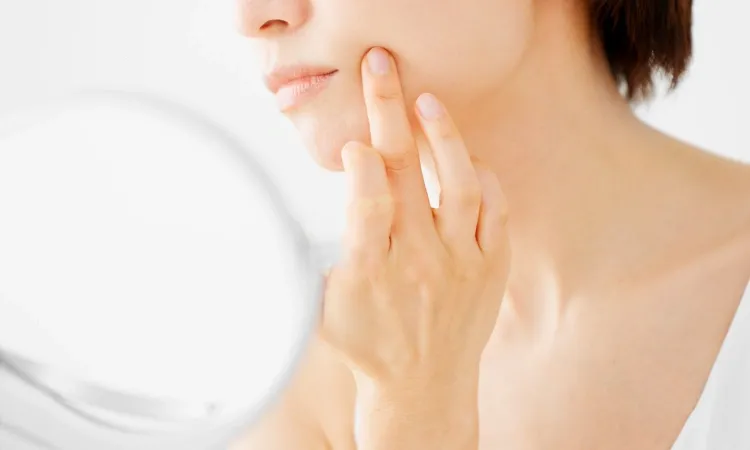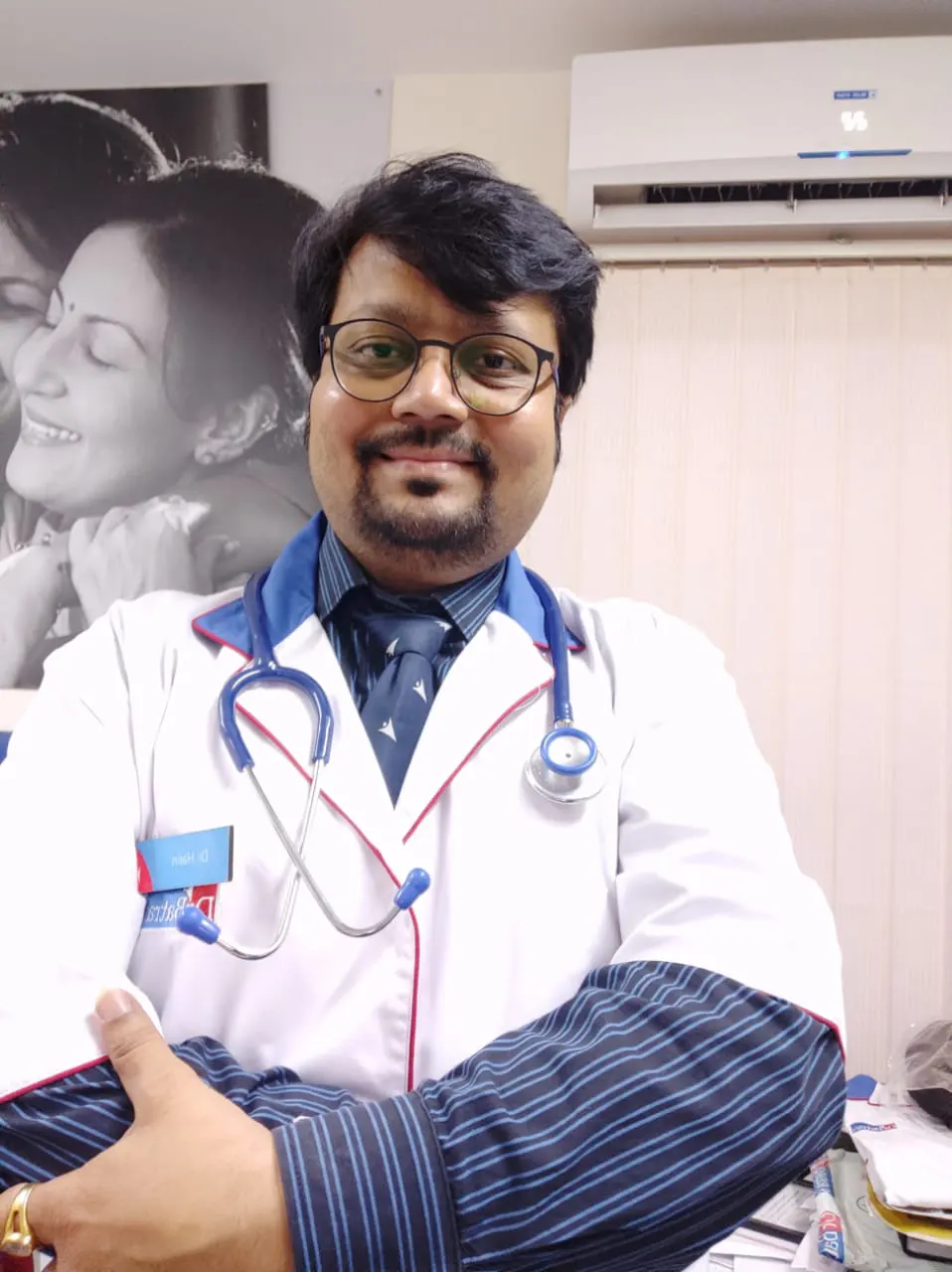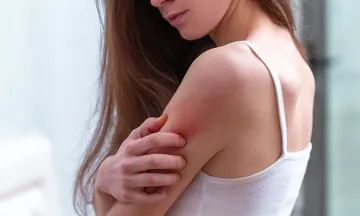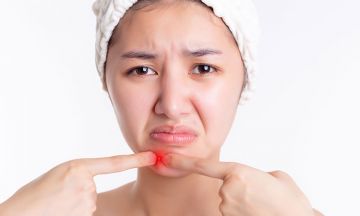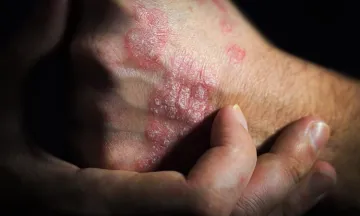Combat Pimples on Face Effectively: Topical and Oral Solutions
It is a common belief that acne only affects the adolescent population. Once you attain adulthood and your hormonal fluctuations settle, you stop getting pimples on your face. This, however, is true for only a small part of the population.
Acne is fairly common among adolescents and adults. According to statistics, about 85% of people between 12 and 25 suffer from acne. This article discusses the types of acne and the best topical and oral pimple treatments.
- Combat Pimples on Face Effectively: Topical and Oral Solutions
- Understanding Pimples on Face
- Effective Pimple Treatment Solutions
- Managing Pimple-prone Skin and Pimple Marks
- Conclusion: Taking Control of Pimple Breakouts
- FAQs
Understanding Pimples on Face
While the causes of pimples on the face in adults vary greatly, they can be narrowed down to the clogging of pores. Acne generally occurs when dead skin cells, oil, and dirt clog the skin pores. This provides a breeding ground for the bacteria residing on the skin naturally. Propionibacterium acnes benefits from the clogged pores and causes inflammation, leading to acne.
Types of Pimples on Face
The types of acne vary from small bumps on the face to large and painful cysts. Broadly, these breakouts are divided into two categories, namely non-inflammatory and inflammatory acne. Each of these categories further contains various types of pimples on the face.
Non-inflammatory Acne
These pimples are mild and do not usually cause any discomfort. Non-inflammatory acne is categorised into:
- Whiteheads: Medically called closed comedones, these breakouts appear as small bumps. They appear as red spots with a white centre on lighter skin tones, while on darker skin, they have a dark appearance. While this type of acne does not cause discomfort or scarring, it may temporarily wrinkle the surrounding skin.
- Blackheads: Medically called open comedones, these breakouts appear as small, dark bumps with a slight elevation. These breakouts are whiteheads that have opened and been exposed to the air, hence the medical name. Due to exposure, the centre of these bumps appears dark, while the surrounding skin looks normal.
Inflammatory Acne
Inflammatory acne is what people generally consider pimples. These breakouts cause scarring and, in severe cases, some discomfort. Inflammatory acne is further categorised into:
- Papules: These are a mild form of inflammatory acne that occurs as bumps beneath the skin surface. They appear as slight elevations on the skin, are tender to the touch, and have no apparent centre. Papules are relatively small, with a diameter of less than 1 centimetre.
- Pustules: This mild inflammatory acne occurs on the skin surface as large circular bumps tender to the touch. These breakouts are filled with yellowish or whitish pus due to the accumulation of bacteria and the immune cells your body employs to kill the bacteria.
- Nodules: These are severe papules that occur as hardened lumps deep beneath the skin surface. They lack an apparent centre and often lead to hyperpigmentation and scarring. Nodules are formed when clogged pores become infected deep within the skin and are thus usually more severe than they look.
- Cysts: These are the most severe forms of inflammatory acne that appear as large red or white pus-filled bumps. However, soft to the touch, cysts can be very painful. They cause visible scarring and sometimes require surgical intervention.
Causes of Pimples on Face in Adults
The common causes of pimples on the face in adults are discussed below.
Heredity
Some individuals are genetically predisposed to acne. People with someone in their close family suffering from adult acne are more prone to it than individuals without such a family history.
Hormonal Disorders
Adults also face hormonal disorders, whether due to stress, poor diet and lifestyle, or an underlying medical condition. These imbalances may cause inflammation, increased sebum production, and disturbances in the skin pH. Sensitivity to such factors can make one prone to acne.
Excess Sebum Production
Excess sebum can clog skin pores and hair follicles, leading to inflammation and, eventually, pimples on the face.
Medications
Certain corticosteroids and medications used to treat depression, epilepsy, and some other conditions are known to cause acne as a side effect. If you take any of these medications and are prone to acne, consult with your doctor about potential alternatives.
Underlying Conditions
Certain medical conditions like Polycystic Ovary Syndrome (PCOS), perioral dermatitis, Cushing syndrome, rosacea, and keratosis pilaris often cause acne in adults.
Contact Irritation
Frequent contact with skincare or haircare products and other components that irritate your skin can lead to acne. These may include shampoos, conditioners, serums, oil-containing cosmetics, harsh cleansers, and razors.
Sun Damage
Prolonged or frequent exposure to the sun can cause sunburn. This leads to excessive sebum production and, thus, acne.
Physical and Mental Stress
Mental stress can disrupt biological pathways in the body that may make you prone to acne. Similarly, physical stress induces hormonal changes and affects the immune system, worsening existing acne.
Effective Pimple Treatment Solutions
Various natural and medical pimple cures have been devised to date. These pimple medicines vary based on their mode of intake and the type of acne they treat. This section discusses the common and effective pimple treatments frequently prescribed by experts.
Topical Solutions for Pimples
In many cases, prescription and over-the-counter ointments can be the best way to remove pimples. This treatment option is especially effective against the pimples on the forehead, nose, and chin. Some common ingredients used in topical pimple cures are discussed below:
Retinoids
These ingredients are derived from vitamin A. Some retinoids are available as over-the-counter drugs, while others are prescription-only. These compounds speed up the cell regeneration process and aid in shedding the old and dead layers of skin cells. This prevents clogging of the pores and, thus, works against acne. Tretinoin and tazarotene are prescription ointments, while adapalene is available as an over-the-counter retinol.
Antibiotics
Topical antibiotics directly attack the festering of Propionibacterium acnes. Note that topical antibiotics must be taken under a doctor's guidance as their inappropriate use can make the bacteria resistant to the drug. Doctors usually pair this ointment with other ingredients like benzoyl peroxide. The common antibiotics used to fight acne include sarecycline, amoxicillin, and doxycycline.
Dr Batra’s® Homeofacial
Dr Batra’s® HomeoFacial is a 5-step skin treatment combining homeopathic ingredients, Korean technology, and European serums. It includes cleansing, electroporation, a Korean machine for hydration and tightening, mild peels, and a homeopathic face mask. The treatment addresses skin concerns such as dehydration, discolouration, ageing, and acne. Options for skin tightening, brightening, and rejuvenation are available. The process is non-invasive, suitable for all skin types, and costs Rs. 450 per consultation.
Dr Batra’s® AI Skin Pro
Dr Batra’s® AI Skin Pro uses advanced algorithms and artificial intelligence to comprehensively analyse the skin, offering an in-depth understanding of various skin issues. It precisely diagnoses skin conditions and delivers personalised treatment plans tailored to individual needs.
Other Treatments
Salicylic acid, benzoyl peroxide, and azelaic acid are widely known over-the-counter topical solutions for pimples. However, you should be careful with their use as they may lead to side effects like skin dryness and irritation.
Choosing the Right Topical Solution
The best way to remove pimples through topical treatments varies for every individual. While several ingredients are common in almost every pimple treatment, care must be taken to choose them.
The compounds used as pimple cures work differently and, thus, have varying effects on different types of pimples on the face. Therefore, it is crucial to choose the right topical solution to obtain optimal results from the treatment.
Oral Solutions for Pimples
Several oral solutions have been formulated to treat various types and severities of acne. The common oral treatments for acne are discussed below.
Oral Antibiotics
Several antibiotic pills act against Propionibacterium acnes, the bacteria causing acne. The most common compounds used for this purpose include doxycycline, amoxicillin, minocycline, erythromycin, and trimethoprim-sulfamethoxazole. Note that antibiotics must be taken under a doctor's guidance as their inappropriate doses can cause the bacteria to become resistant to the drugs and the acne more difficult to treat.
Isotretinoin
It is a retinoid frequently prescribed to treat severe cystic or nodular acne or acne resistant to other treatments.
Anti-Androgens
Androgen is a hormone that stimulates sebum production. Anti-androgen drugs inhibit the activity of androgen receptors and regulate sebum production, thus preventing acne. Spironolactone is a common prescription drug used in this category.
Birth Control Pills
Birth control pills regulate the hormones like androgen responsible for triggering acne. These, however, must be taken under a doctor's guidance as they have several potential side effects.
Pimple Medicine: What You Need to Know
Different types of pimples on the face require different treatment approaches. Therefore, identifying the type and severity of acne is crucial to determine the best ingredients and approach for the treatment.
Consult with a skin specialist and take a skin evaluation test to help you choose the best way to remove pimples in your case. This will help tackle acne while reducing the risk of further irritation and scarring.
Managing Pimple-prone Skin and Pimple Marks
Skincare requires dedication, consistency, and careful choices. This is especially true for people with acne-prone skin. This section discusses the best skin care for pimples and tips for removing pimple marks and managing acne-prone skin.
Best Practices for Pimple Mark Removal
The following are tips to prevent and remove pimple marks.
Acid Treatments
Using alpha hydroxy acids (AHAs) like kojic acid, lactic acid, glycolic acid, and azelaic acid helps remove pimple marks. These ingredients increase cell turnover, thus removing old and dead cells and surfacing the new and even-toned skin cells.
Retinols
Retinols work similarly to AHAs. They have an exfoliating effect that removes dead skin cells and raises a layer of new, evenly-toned cells.
Vitamin C
Vitamin C stimulates collagen production and reduces hyperpigmentation deep within the skin layers.
Sunscreen
While sunscreen does not treat pimple marks, it prevents hyperpigmentation caused by sun damage. Exposure to the sun increases the risk of pimple marks, and applying sunscreen appropriately prevents it.
Skincare Routine for Pimple-Prone Skin
Following is the routine for skin care for pimples as prescribed by experts.
Cleanse
Use a gentle cleanser to remove the dirt, grime, and dead cells from your skin. Look for ingredients like salicylic acid for best results.
Tone
Although optional, it is preferable to use a gentle, alcohol-free toner. It regulates the skin's pH, thus preventing irritation and inflammation.
Treat
Apply the prescribed ointment to the affected areas. Spot treatment is best, wherein you apply the medication only on the breakouts to reduce side effects like drying. Some ingredients must be prevented from being exposed to the sun. Therefore, add them to your daytime or nighttime routine accordingly.
Moisturize
Many people think that oily skin does not require moisturising, but this is untrue. Lack of moisture triggers excessive sebum production, which makes the skin more prone to acne. Use a gentle, light, and oil-free moisturiser if you have oily or combination skin.
Protect
Make sunscreen a must in your daytime routine to avoid sun damage and hyperpigmentation. Reapply on a clean face after every 3 to 4 hours.
Long-Term Strategies for Managing Pimples
Here are some tips for skin care for pimples that will benefit you in the long run:
- Wash your face twice a day to avoid grime buildup. However, avoid harsh cleansers as they can strip off the natural oils from your skin and trigger sebum production.
- Choose an oil-free moisturiser and non-oily cosmetics.
- Look for non-comedogenic skincare products.
- Avoid harsh exfoliators with large granules. Instead, use gentle products with minute particles. While scrubbing can irritate the skin, mild exfoliation is important to prevent buildup and inflammation. The best way around it is to space your exfoliators at least one to two weeks apart.
- Keep your hair and scalp clean, and use gentle hair care products free from harsh chemicals. Debris and chemicals on the scalp can cause forehead acne.
- Do not pinch, pop, or squeeze a pimple. It will irritate it further and potentially spread the pus into surrounding skin cells, causing scarring.
- Reduce sugar intake and other foods with a high glycemic index, like cakes and cookies. They trigger an inflammatory response in the skin.
- Dairy products can potentially aggravate acne. Notice if consumption of any milk-based products triggers or worsens your acne. If so, limit or avoid the intake of such foods. Follow the same with other food ingredients; create a list of foods that irritate your skin and limit their consumption in the future.
- Follow a healthy and balanced diet and adopt an active lifestyle.
- Take steps to manage stress, like taking long walks, meditating, journaling, and others.
Conclusion: Taking Control of Pimple Breakouts
Proper skin care, over-the-counter treatments, and some preventive measures can handle mild pimples on the face. However, for severe or persistent acne, expert consultation is crucial to prevent future breakouts and scarring.
Homeopathic medicine treats pimples with holistic and natural approaches. At Dr Batra’s® Clinic, our skin specialists assess the causes of pimples on adults' faces. They pair this with your physical and psychological symptoms and diet and lifestyle habits. Based on the observation, our experts curate a personalised treatment plan for pimple cure and pimple mark removal.
The medicines used in homeopathic practice are natural and work on your body to heal it from within. This ensures the best results with no adverse effects.
Visit Dr Batra’s® now to control your acne issues effectively for the long term!
